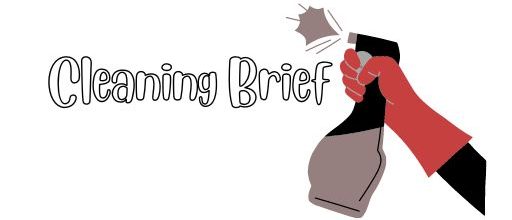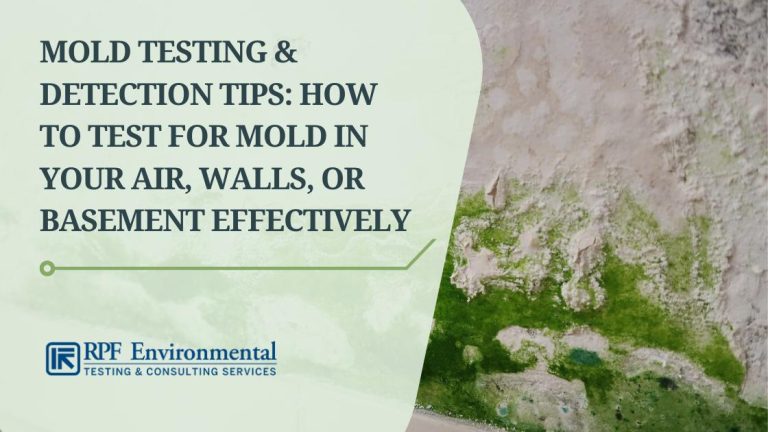How to Clean Mold off Siding: The Ultimate Guide for Spotless Exteriors
To clean mold off siding, mix a solution of water and bleach, apply it to the affected areas, scrub with a brush, and rinse thoroughly. Mold on siding can be unsightly and harmful to your health if left unaddressed.
We will discuss effective methods to clean mold off siding and restore its appearance. Whether you have vinyl, wood, or metal siding, these techniques will help remove mold and prevent it from growing back. By following these simple steps, you can ensure your siding remains clean and free from mold, enhancing the overall appearance and value of your property.

Credit: majestiksoftwash.com
Understanding Mold On Siding
Discover effective ways to remove mold from siding. Keep your exterior looking fresh with simple cleaning techniques. Eliminate mold and maintain a pristine appearance on your siding.
Understanding Mold on Siding Mold can be a persistent problem for homeowners, especially when it starts to grow on the siding of your house. Not only does mold give your home an unsightly appearance, but it can also cause health issues for you and your family. Understanding why mold develops on siding and being able to recognize the signs of mold infestation are essential for maintaining a clean and healthy exterior. H3: What Causes Mold on Siding? Mold growth on siding occurs when there is excess moisture and favorable conditions for its development. Various factors can contribute to the growth of mold, some of which include: 1. Lack of sunlight: Areas with limited exposure to sunlight tend to retain more moisture, providing an ideal environment for mold to thrive. Shaded or north-facing walls often suffer from this issue. 2. High humidity levels: Regions with high humidity are more prone to mold growth. Excessive moisture in the air can accumulate on the siding, leading to the formation of mold colonies. 3. Poor drainage: Improperly designed or clogged gutters, downspouts, or inadequate grading can cause water to accumulate near the siding. This trapped moisture encourages mold growth. 4. Leaks and water damage: Any areas of the siding that have experienced water damage or leaks, such as around windows, doors, or damaged flashing, provide a breeding ground for mold. 5. Lack of ventilation: Insufficient airflow can create a damp environment that encourages mold growth. This can happen in areas where there is limited air circulation or if the siding was improperly installed. H3: Signs of Mold Infestation Detecting mold on siding can sometimes be challenging, as it often starts small and can blend with the color of the siding. However, there are specific signs you should look out for to identify a mold infestation: 1. Discoloration: Dark spots or patches on the siding are a clear indication of mold growth. These stains can be green, black, or brown in color, depending on the type of mold present. 2. Fuzzy or powdery texture: Mold often appears fuzzy or has a powdery surface. If you notice these textures on your siding, it is likely mold. 3. Musty odor: Mold produces a distinctive musty smell, which can be easily noticeable near the affected area. If you detect an unpleasant odor, investigate for mold growth. 4. Peeling or bubbling paint: Mold can cause the paint on your siding to peel, bubble, or crack. Inconsistent paint patterns may indicate the presence of mold underneath. 5. Health symptoms: If you or your family members are experiencing persistent allergies, respiratory issues, or unexplained health problems, mold on the siding could be a contributing factor. By understanding the causes of mold growth on siding and being able to identify the signs of infestation, you can take appropriate steps to clean and prevent mold from reoccurring. Proper maintenance, regular inspections, and prompt action can help keep your siding mold-free, keeping your home both visually appealing and healthy.Preparation For Cleaning
Mold on siding can not only be unsightly but also harmful to your health. Before you start cleaning, it’s essential to take the necessary precautions and gather all the tools you’ll need to effectively remove the mold. By following these steps, you’ll ensure a safe and efficient cleaning process.
Safety Precautions
When dealing with mold, taking safety precautions is of utmost importance. Here are some measures you should follow:
- Put on protective clothing, including gloves, safety goggles, and a mask, to prevent direct contact with mold spores.
- Make sure the area is well-ventilated by opening windows and using fans.
- Avoid cleaning mold on windy days to prevent the spread of spores.
- Keep children and pets away from the affected area during the cleaning process.
Gathering Necessary Tools
Before you start cleaning mold off your siding, gather the following tools:
| Tools | Usage |
|---|---|
| Stiff-bristle brush or scrub brush | To scrub and remove mold from the siding surface. |
| Bucket | To mix the cleaning solution. |
| Mild detergent or a specialized mold cleaner | To create a cleaning solution. |
| Garden hose with a spray nozzle attachment | To rinse off the siding after cleaning. |
| Ladder | If the mold is on upper portions of the siding and requires reaching high areas. |
By having these tools at hand, you’ll be well-equipped to tackle the mold and ensure a thorough cleaning.
Methods For Mold Removal
When it comes to removing mold from siding, there are several methods you can employ. Whether you’re looking for natural solutions or prefer to use commercial cleaners, it’s essential to address mold promptly to prevent it from spreading.
Natural Cleaning Solutions
If you prefer eco-friendly options, natural cleaning solutions can effectively tackle mold on siding. Vinegar, baking soda, and hydrogen peroxide are common household items that can be used to create powerful mold-fighting mixtures. These natural alternatives not only eliminate mold but also help protect the environment.
Using Commercial Cleaners
Commercial cleaners specially formulated for mold removal provide a convenient and potent solution. Mold-specific cleaners are designed to combat mold effectively without causing damage to the siding. Additionally, there are biodegradable and environmentally friendly commercial products available that ensure a safe yet efficient mold removal process. When using these products, it’s essential to follow the manufacturer’s instructions for the best results.

Credit: lsmain.com
Scrubbing And Rinsing Techniques
When it comes to cleaning mold off your siding, scrubbing and rinsing are essential techniques that can help you restore the beauty and integrity of your home’s exterior. It’s important to choose the right brush or scrubber and use proper rinsing strategies to ensure effective mold removal. In this section, we will discuss these techniques in detail.
Choosing The Right Brush Or Scrubber
Using the right brush or scrubber can make a significant difference in cleaning mold off siding. The type of brush or scrubber you choose depends on the material of your siding and the severity of the mold growth. Here are some options to consider:
- Stiff-bristle brush: Ideal for removing tough mold stains from durable siding materials such as vinyl or metal.
- Soft-bristle brush: Suitable for delicate or painted siding, as it won’t damage the surface.
- Scrub brush with an extension pole: Allows you to reach higher areas without the need for a ladder.
- Power scrubber: An electric or battery-powered tool that can make the scrubbing process easier and more efficient.
Consider the condition and texture of your siding when selecting the appropriate brush or scrubber. Always follow the manufacturer’s recommendations and test in an inconspicuous area before tackling the entire surface.
Proper Rinsing Strategies
After scrubbing the mold off your siding, proper rinsing is crucial to remove any remaining residue and ensure a thorough clean. Here are a few strategies to follow:
- Start from the top: Begin rinsing from the top of your siding and work your way down. This will prevent water from accumulating at the bottom, reducing the risk of water damage or staining.
- Use a garden hose: A garden hose with a high-pressure nozzle can be effective for rinsing off the loosened mold particles. Adjust the water pressure accordingly to avoid damaging the siding.
- Consider a pressure washer: For heavy mold infestations, a pressure washer can be a useful tool. However, exercise caution and follow the manufacturer’s instructions to prevent damage to the siding.
- Thoroughly rinse: Make sure to rinse all areas of the siding, paying extra attention to crevices and corners where mold can hide.
Keep in mind that safety should always be a priority. If using a ladder or working at heights, make sure to take necessary precautions and have someone present to assist if needed.
Cleaning mold off siding requires proper scrubbing and rinsing techniques to achieve optimal results. By choosing the right brush or scrubber and implementing effective rinsing strategies, you can effectively restore the appearance of your siding and protect your home’s exterior from further mold growth.
Preventive Measures And Maintenance
When it comes to keeping your home’s siding clean and free from mold, prevention is key. By taking proactive measures and performing regular maintenance, you can prevent future mold growth and keep your siding in top condition for years to come. Here are a few simple tips that will help you maintain your siding effectively:
Preventing Future Mold Growth
Mold thrives in damp and humid conditions, so it’s essential to keep your siding dry. Here are some preventive measures you can take:
- Ensure proper drainage around your home by regularly clearing out gutters and downspouts to prevent water from collecting near the siding.
- Direct downspouts away from the foundation of your home to prevent excess water from seeping into the siding.
- Trim trees and shrubs near your home to allow proper air circulation and sunlight to reach the siding, preventing moisture buildup.
- Inspect the caulking around windows, doors, and vents regularly, and replace any damaged or deteriorating caulking to prevent water infiltration.
- Consider installing a vapor barrier beneath the siding to further protect against moisture and mold growth.
Regular Siding Maintenance Tips
Maintaining your siding on a regular basis will not only keep it looking clean and attractive but also help prevent mold growth. Here are some maintenance tips to follow:
- Inspect your siding at least once a year for any signs of damage, including cracks, holes, or peeling paint.
- If you notice any mold or mildew spots on your siding, clean them promptly to prevent their spread. A mixture of water and vinegar or a commercial mold cleaner can be effective for this purpose.
- Power washing your siding annually can help remove dirt, debris, and any surface mold that may have developed. Ensure that your power washer is set to a low or medium pressure setting to avoid damaging the siding.
- Consider applying a mold-resistant paint or sealant to your siding to provide an added layer of protection against mold growth.
- Regularly clean your gutters and downspouts to prevent water overflow and potential water damage to the siding.
By following these preventive measures and maintenance tips, you can minimize the risk of mold growth on your home’s siding and ensure its longevity and curb appeal.

Credit: medium.com
Frequently Asked Questions Of How To Clean Mold Off Siding
How Does Mold Develop On Siding?
Mold develops on siding due to excessive moisture and lack of sunlight. It thrives in humid environments, especially on surfaces that are not properly ventilated. Poor drainage and high humidity levels contribute to the growth of mold on siding.
Why Is It Important To Clean Mold Off Siding?
Cleaning mold off siding is important to maintain the aesthetics of your home and prevent further damage. Mold can deteriorate the siding material and spread to other areas, causing health issues and structural problems. Regular cleaning of mold ensures a healthy living environment and prolongs the lifespan of your siding.
What Tools And Supplies Are Needed To Clean Mold Off Siding?
To clean mold off siding, you will need a soft brush or sponge, a mild detergent or vinegar solution, a garden hose, and protective gear such as gloves and goggles. Avoid using harsh chemicals or pressure washers as they can damage the siding.
Always follow the manufacturer’s instructions for cleaning your specific type of siding.
How Often Should I Clean Mold Off Siding?
The frequency of cleaning mold off siding depends on various factors such as the climate, shade coverage, and proximity to vegetation. Generally, it is recommended to inspect and clean your siding at least once a year. However, if you notice significant mold growth or live in a damp area, more frequent cleanings may be necessary.
Conclusion
In order to keep your siding clean and mold-free, regular maintenance and proper cleaning techniques are essential. By following the tips and methods suggested in this blog post, you can effectively remove and prevent mold from growing on your siding.
Keep your home looking its best and maintain the longevity of your siding with these simple and effective cleaning solutions.




